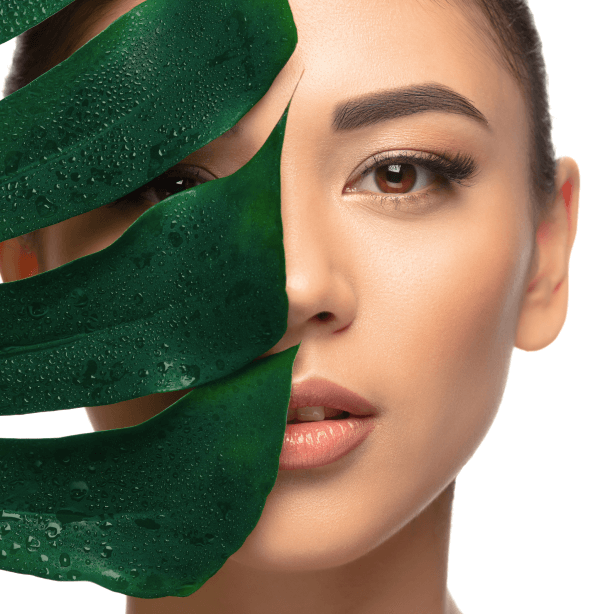
The quest for eternal youth has taken many forms throughout history. In contemporary society, the war against aging manifests itself in myriad cosmetic treatments. Botox injections, once an esoteric luxury, have found their way into the mainstream. Used by millions each year, botulinum toxin has become a household name, a staple in the pursuit of smooth, wrinkle-free skin.
For beauty enthusiasts, cosmetic surgery seekers, and health-conscious individuals, the word ‘Botox’ evokes a myriad of emotions – curiosity, skepticism, and sometimes, fear. This comprehensive guide breaks down the use of Botox, the procedure, potential risks, and the coveted results, equipping you with the information you need if you’re contemplating or curious about this popular cosmetic procedure.
What Is Botox?
Botox, short for botulinum toxin, is a neurotoxic protein produced by the bacterium Clostridium botulinum. On the grand medical stage, it’s a critical component for addressing a variety of health issues — from excessive sweating to migraines. However, in the cosmetic arena, it is chiefly known for its ability to reduce the appearance of facial wrinkles.
How Is Botox Used?
Botox is used primarily to reduce the appearance of facial wrinkles. Common treatment areas include:
- Frown lines (the “11” between the eyebrows)
- Crow’s feet (lines surrounding the eyes)
- Forehead creases
- Bunny lines (lines on the sides of the nose)
- Lip lines
- Dimpled chins
- Platysmal bands (neck wrinkles)
It’s important to note that the application of Botox should be performed by a licensed and trained healthcare professional, such as a dermatologist or plastic surgeon.
How Does Botox Work?
Botox works by temporarily paralyzing muscles. This may sound alarming, but when administered by a professional in the appropriate areas, this paralysis is precisely what allows for the smoothing of facial wrinkles.
Facial wrinkles, in many cases, are the result of repetitive muscle contractions over time. Botox inhibits the release of acetylcholine, a neurotransmitter, which in turn prevents muscle cells from receiving a signal to contract. The muscle temporarily relaxes, reducing the appearance of the wrinkle. The effect typically lasts for a few months, after which muscle function returns, and wrinkles may reappear.
How Is a Botox Procedure Done?
Before the injections, the area will be cleaned, and a topical anesthetic may be applied to reduce discomfort. The procedure itself is relatively quick, lasting about 10-15 minutes. A very thin needle is used for the injections, which makes the process almost painless for most patients.
Your doctor or a member of their team will ask you to make certain facial expressions to determine the precise injection points. Once the Botox is injected, the treated area may be gently iced to minimize swelling and discomfort.
Cost, Time, and Effectiveness
The cost of Botox injections in frisco can vary depending on a variety of factors, including the geographic region, the expertise of the provider, and the number of areas being treated. Generally, the cost is calculated per unit, with each area requiring a certain number of units.
The effectiveness of Botox can be seen within a few days, with final results appearing after about two weeks. On average, the effects last three to six months, but this time frame can also vary depending on individual metabolism and other factors. Some providers may offer touch-up treatments to prolong the effects.
10 Benefits of Botox Treatments
- Reduces the Appearance of Wrinkles: Botox is most widely recognized for its ability to diminish the look of facial wrinkles, offering a more youthful appearance.
- Prevents New Wrinkle Formation: By temporarily paralyzing the muscles, Botox can prevent new wrinkles from forming, maintaining smoother skin for longer.
- Minimally Invasive: Unlike surgical options, Botox is a non-surgical procedure that requires no downtime, making it a convenient choice for those with busy lifestyles.
- Quick Procedure with Immediate Results: Treatments are fast (usually under 15 minutes), and results can be seen in a few days, reaching full effect within a week.
- Customizable: Botox treatments can be tailored to address specific areas and concerns, ensuring personalized results that look natural.
- Temporarily Alleviates Migraine Pain: Botox is FDA approved for the treatment of chronic migraines, offering relief to those who suffer from frequent, debilitating headaches.
- Reduces Excessive Sweating: Known as hyperhidrosis, excessive sweating can be significantly reduced with Botox injections, providing an effective solution for this uncomfortable condition.
- May Help with Muscle Spasms: Botox is used in the medical field to treat muscle spasms and stiffness in conditions such as cerebral palsy, providing symptomatic relief.
- Boosts Confidence: By enhancing physical appearance and addressing certain physical conditions, Botox can lead to increased self-esteem and confidence.
- Long-Lasting, but Not Permanent: The effects of Botox last several months, allowing individuals to decide if they wish to continue treatment or adjust as needed.
Aftercare Instructions and Restrictions
After receiving Botox injections, following specific aftercare instructions is crucial for achieving the best results and minimizing the risk of side effects. Key aftercare tips include:
- Avoid touching or massaging the treated areas for at least 24 hours. This can help prevent the Botox from spreading to unintended muscles.
- Stay upright for 4 hours post-treatment. Avoid bending over or lying down to ensure the Botox stays in the injected area.
- Skip strenuous activities for 24 hours. High-intensity workouts can increase blood flow to the face, potentially affecting the results.
- Apply ice if necessary. If you experience swelling, gently apply ice to the treated area. Use a cloth to avoid direct contact with the skin.
- Stay out of the sun and avoid heat exposure (like saunas or hot tubs) until any redness or swelling resolves. Heat can increase the risk of swelling and bruising.
- Avoid alcohol for at least 24 hours. Alcohol can increase the risk of bruising at the injection sites.
Common Misconceptions about Botox
By adhering to these aftercare instructions and understanding the temporary restrictions, patients can help ensure their Botox treatment is as effective and comfortable as possible.
There are several misconceptions surrounding Botox that can deter individuals from considering it as an option for cosmetic or medical treatment. One of the most prevalent myths is that Botox results in an expressionless or “frozen” face. In reality, when administered correctly by a qualified professional, Botox enhances appearance while allowing natural facial expressions. Another common misconception is that Botox is suitable only for older individuals seeking to combat signs of aging. However, Botox can benefit a wide range of ages by preventing the formation of deep wrinkles over time. Additionally, some people believe Botox treatments are highly painful and involve lengthy recovery times. Most patients, however, report minimal discomfort, akin to a slight pinch, and there is usually no significant downtime required. Dispelling these myths is crucial in providing accurate information and helping potential candidates make informed decisions about Botox treatments.
How Long Does a Botox Shot Last?
Botox’s effects are not permanent and typically last for about three to six months. Regular upkeep is usually required to maintain the desired appearance. This regularity can be an advantage, as it allows for adjustments over time, ensuring natural and beautiful results.
What Are the Side Effects of Botox?
Like any medical procedure, Botox injections carry potential side effects, though they are generally minor and temporary. Common side effects include:
- Pain or tenderness at the injection site
- Headache
- Temporary bruising
- Drooping of the eyelids
- Crooked smile
In extremely rare cases, more severe side effects can occur. These include:
- Problems with respiratory function in cases where Botox spreads beyond the injection site
- The risk of allergic reaction, as with any injected substance
You should report any persistent or severe side effects to your healthcare provider immediately.
Who Should Not Get Botox?
Certain individuals should avoid Botox or use it with caution. This includes individuals who:
- Are pregnant or breastfeeding
- Have a neuromuscular disorder
- Are allergic to any of the ingredients in Botox
- Have a skin infection or other condition in the planned injection area
A thorough consultation with a qualified provider is essential to discuss any conditions or concerns before proceeding with Botox treatment.
Will Health Insurance Pay for Botox?
In the vast majority of cases, health insurance will not cover the cost of Botox injections for cosmetic purposes. However, if treatments like Dysport injections or Xeomin injections are being used for medical reasons, such as to treat migraines or certain muscle disorders, insurance may cover some or all of the cost.
It’s always recommended to check with your insurance provider beforehand to understand covered uses and potential reimbursement.
Navigating the world of aesthetic treatments, such as fillers treatment, Sculptra injections, Radiesse treatment or Botox injections, can be overwhelming. It’s critical to do your research, find a reputable provider, ask questions, and have a clear understanding of the benefits and potential risks. With the right approach, these treatments can be safe and effective ways to rejuvenate your appearance and boost your confidence. Remember, informed decisions are the most beautiful ones.


